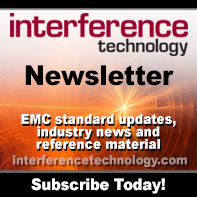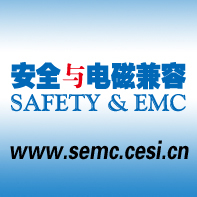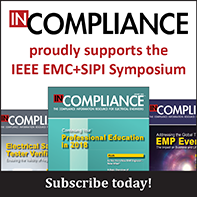EXPERIMENTS & DEMONSTRATIONS
EMC and SI/Power Integrity hardware experiments and demonstrations continue to be a very popular symposium event, and the 2018 IEEE Symposium on Electromagnetic Compatibility, Signal and Power Integrity will be no exception. The event’s purpose is to demonstrate important EMC and SIPI concepts through interactive experiments and demonstrations focusing on, for example, EM coupling phenomena and effects, EMC and Signal and Power Integrity measurements and troubleshooting methods.
READ BELOW FOR THE EXPERIMENTS AND DEMONSTRATIONS SCHEDULE.

ALL EXPERIMENTS AND DEMONSTRATIONS WILL BE HELD IN THE REAR OF THE EXHIBIT HALL
Tuesday, 31 July - 10:00 - 12:00pm
Topic: Modeling of Cable Harness Radiation and Susceptibility for Automotive and Aircraft Structures
Presenter: Derek Campbell, Altair, Irvine, CA, USA
Abstract: EMC/EMI Engineers commonly strive to address compliance problems involving cables, which have a major impact on the susceptibility and emissions performance of a system. This software demonstration will therefore include bi-directional coupling considerations, interconnection of cable paths into harnesses and a unique approach for solving shielded cables along an arbitrary path. A few scenarios will be discussed (e.g. lightning, high-intensity radiated fields (HIRF)) for aerospace
applications.
Topic: Incorporating Equipment Under Test (EUT) Monitoring within Immunity Testing
Presenters: Michael Christopher, ETS-Lindgren, Cedar Park, TX, USA
Abstract: Automating the EMC test process has the benefits of improving measurement accuracy and repeatability while also increasing test throughput. The automated EMC test process is further enhanced by incorporating EUT monitoring using a vision system within the test program. Immunity testing with built-in EUT monitoring decreases error probability. This demonstration will show how a vision system can be incorporated into immunity testing and reduce potential errors.
Topic: 5G Performance Measurements
Presenter: Jari Vikstedt, ETS-Lindgren, Cedar Park, Texas, USA
Abstract: This demonstration will present a 2-dimensional antenna pattern measurement for a 5G/millimeter wave (mmWave) antenna array using a compact portable antenna
measurement system. The demonstration will be accompanied by a presentation that highlights the challenges associated with evaluating 5G New Radio (NR) clients and gNodeB base stations that utilize beamforming antennas and mmWave communication.
Tuesday, 31 July – 2:00 – 4:00pm
Topic: Bulk Cable Injection (BCI) to Simulate Response to Electrostatic Discharge (ESD) Events on Spacecraft
Presenter: John McCloskey and Jen Dimov, NASA/Goddard Space Flight Center, Greenbelt, MD, USA
Abstract: Protecting electronics from Electrostatic Discharge (ESD) is an ever present concern, both in space and on the ground. Although many existing standards define test and analysis methods for determining susceptibility to ESD events, there is no well-established ESD standard for checking the indirect effects of ESD events resulting from spacecraft charging-induced discharges. Traditional ESD testing addresses the risk of physical contact of the hardware by people, i.e. man/machine interfaces. Space based equipment is generally in sealed metal enclosures and faces no further risk of physical contact after the ground test program. However, it still may face ESD risks from discharge events from other equipment on the spacecraft. The main path for coupled energy from ESD events to get to potentially sensitive electronics inside such enclosures is through the interconnecting cables attached to the unit.
This demonstration provides a basis for understanding the physics of ESD events, characterizing the resulting coupling to victim hardware (primarily cables), and applying direct bulk cable injection techniques to simulate ESD events in a repeatable and consistent manner.
Topic: Permeability*: What Is It, How Is It Measured, S-Parameters, and Why Do I Care?
Presenters: Gary Bush, Southern Magnetics Corporation, Milton, GA, USA
Abstract: Why is magnetic permeability important, what are "S Parameters," and what are the equations to connect measurement to permeability? This demonstration will characterize the complex permeability, mu*, of a magnetic sample by measuring the Scattering parameters ("S Parameters") using an Automatic Network Analyzer. It will be fun!
Topic: Simulation of Conducted Emissions in a Power Electronics PCB and Verification of Results by Measurements
Presenters: Darwin Li and Jing Zhou, CST of America, LLC, Santa Clara, CA, USA
Abstract: In modern electronic applications, a majority of devices utilize switched AC/DC or DC/DC converters in their power networks. The power provided from a source is switched by the converter in order to adjust the output voltage level (Switch Mode Power Supply - SMPS). Unfortunately, the switching always creates noise, which may be significant at higher frequencies. Furthermore, this unwanted emission can upset the source or any other device in the same supply power network, because it is easily transmitted through the power lines.
In this experiment, we will demonstrate how to simulate conducted emissions and how EMI filtering can help suppress this. The simulation model and results will be compared directly to live measurement of the physical hardware sample. With coupled 3D EM field and circuit co-simulation, early stage analysis can be performed before a prototype of the device is manufactured. The subject of this demonstration is a typical, bulk, step-down, DC/DC converter. The effect of the PCB layout will also be shown and discussed.
Wednesday, 1 August - 9:30 – 11:30am
Topic: A Scope Measurement Puzzle to Challenge and Amus
Presenters: Eric Bogatin, Teledyne LeCroy, Boulder, CO, USA
Abstract: This demonstration discusses Situational Awareness: how the instrument we use influences the interpretation of the figures of merit of a DUT. To correctly interpret a measurement, we need to have an electrical model of the DUT AND the scope, cables and probes. The object of this demonstration is a fast edge signal produced by the cal source of the oscilloscope. Attendees will see that the output rise time increases with coax cable length and will explore the root cause of this effect. A commonly held myth will be busted, and attendees will gain an understanding of why it is so important to be aware of what the scope is measuring and what it looks like electrically.
Topic: Impact of the Guard Trace and Circuit Topology on Crosstalk between PCB Traces
Presenter: Bogdan Adamczyk and Ryan Aldridge, Grand Valley State University, Grand Rapids, MI, USA
Abstract: This demonstration addresses the topic of inductive and capacitive coupling (crosstalk) between PCB traces. A four–layer PCB is used where the distance between the signal traces and the distance to the ground plane are varied. Additionally, a guard trace (acting as a shield) with different termination schemes is employed. A short tutorial is followed by real-time measurements to support the analytical models developed.
Topic: RADAR Module Simulator Demonstration
Presenters: Garth D’Abreu, ETS-Lindgren, Cedar Park, Texas, USA
Abstract: RADAR modules are an increasingly important component in many ADAS enabled vehicles and the performance of these systems is a critical part of overall occupant safety. Target size, range, distance and speed are among the main performance attributes of a module, and the ability to verify performance under varying simulated conditions is vital. This demonstration uses a radar target simulator and small anechoic chamber to assess the performance of a standalone module under different target conditions. As part of the demonstration, the size, speed, range and quantity of targets can be varied and the response of the module under test evaluated for a suitable response. A signal analyzer is used as part of the measurement system to perform peak power, sensitivity and signal quality measurements.
Wednesday, 1 August – 2:00 – 4:00pm
Topic: Using FFT-Based Receiver for Fast, Broad-Spectrum Measurements in Full Compliance Testing
Presenter: Arnd Frech and Stephan Braun, Gauss Instruments, Munich, Germany
Abstract: Taking reliable, repeatable, broad-spectrum measurements are frustrated in three areas - computational limits, narrow band focus and unpredictable transients. All three problems can be easily identified and solved with new capabilities in COTS Receiver technology. This presentation will show how parallel processing and FFT-enabled signal measurement path can offer a 'Single glance', 'wide Field-Of-View' solution for all full-compliant EMC testing.
Topic: Fixture Design, Measurement, and De-Embedding for Characterization of PCB Transmission Lines up to 40 GHz
Presenter: Jun Fan, Missouri University of Science & Technology, Rolla, MO, USA
Abstract: In this demo, a high-speed, differential channel on a PCB is characterized using methodologies that are consistent with the IEEE P370 draft standard. Handheld microprobes will be used with a 4-port VNA to measure 2X Thru and DUT structures, and Smart Fixture De-embedding will be used to remove the fixture response from the measured response. The techniques will be demonstrated with both good and poor test fixtures so attendees can see the impact of proper fixture design.
Topic: Fixture De-Embedding Verification with a PCB Plug and Play Kit
Presenter: Heidi Barnes, Keysight EEsof EDA, Santa Rosa, CA, USA
Abstract: In this demo, a connectorized PCB Plug-and-Play Kit is used to show how a user can verify that a fixture de-embedding process (measured S-parameters + algorithm) is valid and effective, as described in the IEEE P370 draft standard.
Topic: Visual Electromagnetics of Interconnects
Presenter: Yuriy Shlepnev, Simberian Inc., Westlake Village, CA, USA
Abstract: Digital PCB and packaging interconnects operating at tens of Gbps data rates are usually designed formally with the minimization of the losses and reflections while maintaining the localization of each link. Can we better understand the major signal degradation effects by simply looking at the electromagnetic fields? This interactive demo session will introduce some basic concepts of interconnect behavior through the 3D visualization and animation of electromagnetic fields, currents and power flow densities computed with Trefftz Finite Elements in a 3D full-wave solver. You will learn how to use the field visualization to understand where the currents and power flow in uniform interconnects, what happens if reference conductors are compromised, and how traces and via holes become coupled.
Thursday, 2 August - 9:30 – 11:30am
Topic: A Practical Method to Measure Ground Bounce in Microcontrollers
Presenters: Eric Bogatin, Teledyne LeCroy, Boulder, CO, USA
Abstract: In this demonstration, attendees are shown how to measure the ground bounce in a package using quiet high and quiet low I/O lines. The demo uses an instrumented microcontroller board on which the number of I/O switching simultaneously can be controlled. The oscilloscope can monitor up to 8 channels at once. Attendees will also see that the rail noise on the die is not the same as the rail noise on the board. It depends on which is the aggressor and which is the victim. Using this simple method, anyone can measure ground bounce and rail noise in a package.
Topic: Evaluation of Near Field Probes
Presenter: Brendon Berg, The EMC Shop, Roseville, CA, USA
Abstract: In this hands-on demonstration, we evaluate various near-field probes.
Topic: Modeling the Coupling of Transients Through Cable Shields on Integrated Platforms
Presenter: Jennifer Kitaygorsky, Electro Magnetic Applications, Inc., Denver, CO, USA
Abstract: Various electromagnetic environmental effects (E3) can cause current transients to flow on cable shields inside integrated platforms such as aircraft and spacecraft. Lightning is one of the effects that introduces high current transients on cable shields that transfers to pins at box interfaces through transfer impedance. Spacecraft can experience electrostatic discharge events due to spacecraft charging, where charge accumulates on spacecraft surfaces and inside dielectrics due to the surrounding space plasma environment. These discharge events introduce EMI issues inside the spacecraft.
In this demonstration, we will show how to model an entire integrated platform with structures, cables and boxes, and simulate pin transients (currents and voltages) at box interfaces due to the two types of E3 events described above.
Topic: Control of Electric and Magnetic Radiated Emissions at Low and High Frequencies
Presenter: Pablo Narvaez and Katherine Dang, Jet Propulsion Laboratory, California Institute of Technology, Pasadena, CA, USA
Abstract: The Jet Propulsion Laboratory has participated in multiple projects whereby implementation of proper electric and magnetic field shielding has been a key component in successful space missions, free of electromagnetic interference. This hardware experiment/demonstration presents typical radiated electric and magnetic field shielding methods similar to those applied on JPL hardware for typical flight programs.
FOR MORE INFORMATION PLEASE CONTACT:
Bob Scully: bob.scully@ieee.org
Sam Connor: sconnor@ieee.org





